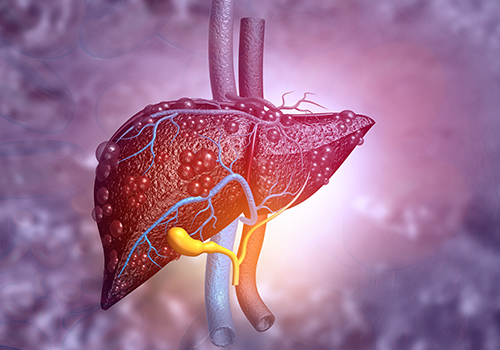

Minimally invasive liver cancer treatment is a type of cancer treatment that uses small incisions and image guidance to access the liver.

This type of treatment is less invasive than traditional surgical cancer treatments. These procedures are performed by specially trained medical professionals called interventional radiologists (IR), using various non-surgical procedures such as angioembolization and ablation. These minimally invasive treatments are highly effective in early-stage cancers and can be used to treat primary liver cancer or secondary liver cancer.
The most common type of minimally invasive liver cancer treatment is trans-arterial chemoembolization (TACE). It is a procedure where a catheter is inserted into an artery that supplies blood to the liver. A small amount of chemotherapeutic drug and embolic particles are then injected into the artery that supplies blood to the tumor. This blocks blood supply to the tumor and deprives it of oxygen and nutrients and eventually causes it to die.
This intra-arterial approach is similar to TACE in using image guidance and catheters, but instead of chemotherapeutic agents, the artery is injected with a beta-emitting isotope known as yttrium-90 which selectively reaches the tumor and destroys it with radiation that is limited to only the tumor.
Percutaneous tumour ablation is an image-guided procedure that uses needle-like devices to insert chemicals or energy into the targeted tissue to destroy cancer cells. There are different types of ablation procedures used, such as radiofrequency (RFA), microwave (MWA) and cryoablation. RFA uses high-frequency waves to heat and destroys tumour cells. Cryoablation uses extreme cold to kill the tumour cells. MWA uses heat generated by electromagnetic waves to destroy cancer cells.
These devices are inserted under image guidance and sedation. Procedure usually last less than 30 minutes, have same day recovery and minimal complications with results equal or better than surgical removal of liver cancer.
Minimally invasive liver cancer treatment is usually done on an outpatient basis, which means that you won't have to stay in the hospital overnight. The procedures are typically done using local anaesthesia, which numbs the area around the tumour. You may also be given sedation to help you relax.
After the procedure, you'll be monitored for a few hours to make sure that you're recovering well. You may have some side effects, such as pain, nausea, or fatigue. These are usually temporary and will go away within a few days.
If you are looking for a highly experienced and well-trained Interventional Radiologist who can treat your cancer with minimum invasion, your search ends here.
Call us at +91-9063453805 to schedule an appointment today!